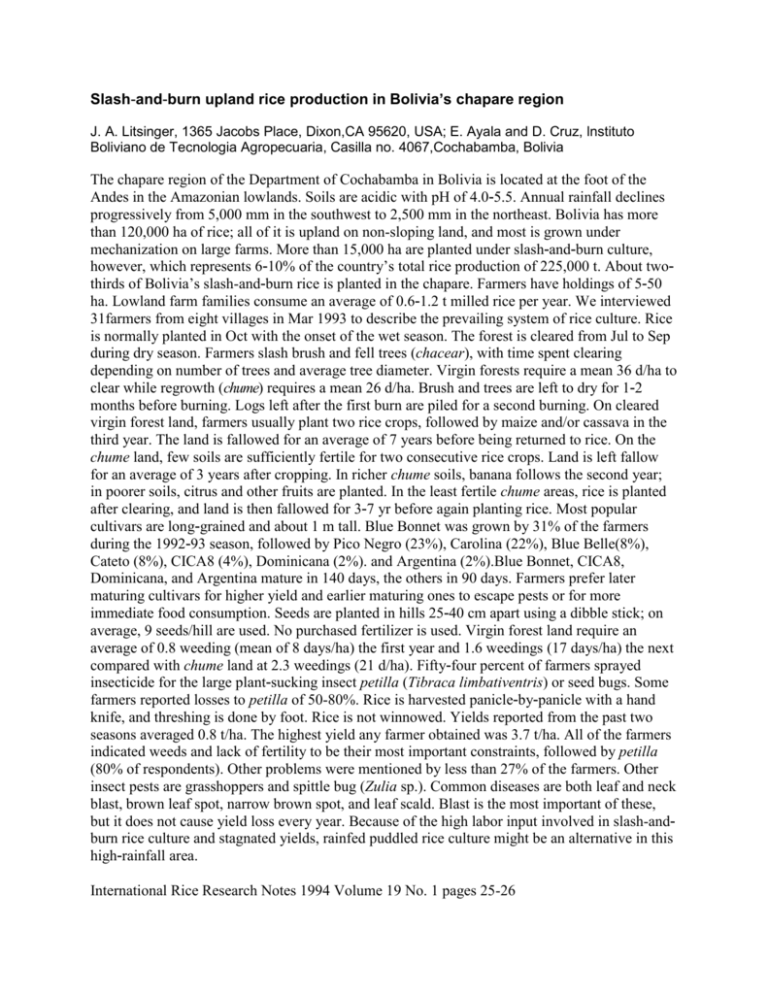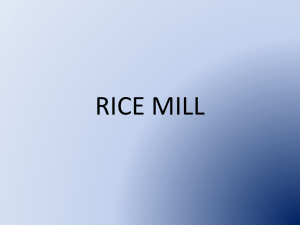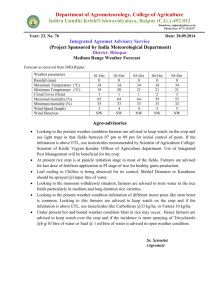Slash-and-burn rice in the Amazon
advertisement

Slash-and-burn upland rice production in Bolivia’s chapare region J. A. Litsinger, 1365 Jacobs Place, Dixon,CA 95620, USA; E. Ayala and D. Cruz, lnstituto Boliviano de Tecnologia Agropecuaria, Casilla no. 4067,Cochabamba, Bolivia The chapare region of the Department of Cochabamba in Bolivia is located at the foot of the Andes in the Amazonian lowlands. Soils are acidic with pH of 4.0-5.5. Annual rainfall declines progressively from 5,000 mm in the southwest to 2,500 mm in the northeast. Bolivia has more than 120,000 ha of rice; all of it is upland on non-sloping land, and most is grown under mechanization on large farms. More than 15,000 ha are planted under slash-and-burn culture, however, which represents 6-10% of the country’s total rice production of 225,000 t. About twothirds of Bolivia’s slash-and-burn rice is planted in the chapare. Farmers have holdings of 5-50 ha. Lowland farm families consume an average of 0.6-1.2 t milled rice per year. We interviewed 31farmers from eight villages in Mar 1993 to describe the prevailing system of rice culture. Rice is normally planted in Oct with the onset of the wet season. The forest is cleared from Jul to Sep during dry season. Farmers slash brush and fell trees (chacear), with time spent clearing depending on number of trees and average tree diameter. Virgin forests require a mean 36 d/ha to clear while regrowth (chume) requires a mean 26 d/ha. Brush and trees are left to dry for 1-2 months before burning. Logs left after the first burn are piled for a second burning. On cleared virgin forest land, farmers usually plant two rice crops, followed by maize and/or cassava in the third year. The land is fallowed for an average of 7 years before being returned to rice. On the chume land, few soils are sufficiently fertile for two consecutive rice crops. Land is left fallow for an average of 3 years after cropping. In richer chume soils, banana follows the second year; in poorer soils, citrus and other fruits are planted. In the least fertile chume areas, rice is planted after clearing, and land is then fallowed for 3-7 yr before again planting rice. Most popular cultivars are long-grained and about 1 m tall. Blue Bonnet was grown by 31% of the farmers during the 1992-93 season, followed by Pico Negro (23%), Carolina (22%), Blue Belle(8%), Cateto (8%), CICA8 (4%), Dominicana (2%). and Argentina (2%).Blue Bonnet, CICA8, Dominicana, and Argentina mature in 140 days, the others in 90 days. Farmers prefer later maturing cultivars for higher yield and earlier maturing ones to escape pests or for more immediate food consumption. Seeds are planted in hills 25-40 cm apart using a dibble stick; on average, 9 seeds/hill are used. No purchased fertilizer is used. Virgin forest land require an average of 0.8 weeding (mean of 8 days/ha) the first year and 1.6 weedings (17 days/ha) the next compared with chume land at 2.3 weedings (21 d/ha). Fifty-four percent of farmers sprayed insecticide for the large plant-sucking insect petilla (Tibraca limbativentris) or seed bugs. Some farmers reported losses to petilla of 50-80%. Rice is harvested panicle-by-panicle with a hand knife, and threshing is done by foot. Rice is not winnowed. Yields reported from the past two seasons averaged 0.8 t/ha. The highest yield any farmer obtained was 3.7 t/ha. All of the farmers indicated weeds and lack of fertility to be their most important constraints, followed by petilla (80% of respondents). Other problems were mentioned by less than 27% of the farmers. Other insect pests are grasshoppers and spittle bug (Zulia sp.). Common diseases are both leaf and neck blast, brown leaf spot, narrow brown spot, and leaf scald. Blast is the most important of these, but it does not cause yield loss every year. Because of the high labor input involved in slash-andburn rice culture and stagnated yields, rainfed puddled rice culture might be an alternative in this high-rainfall area. International Rice Research Notes 1994 Volume 19 No. 1 pages 25-26






